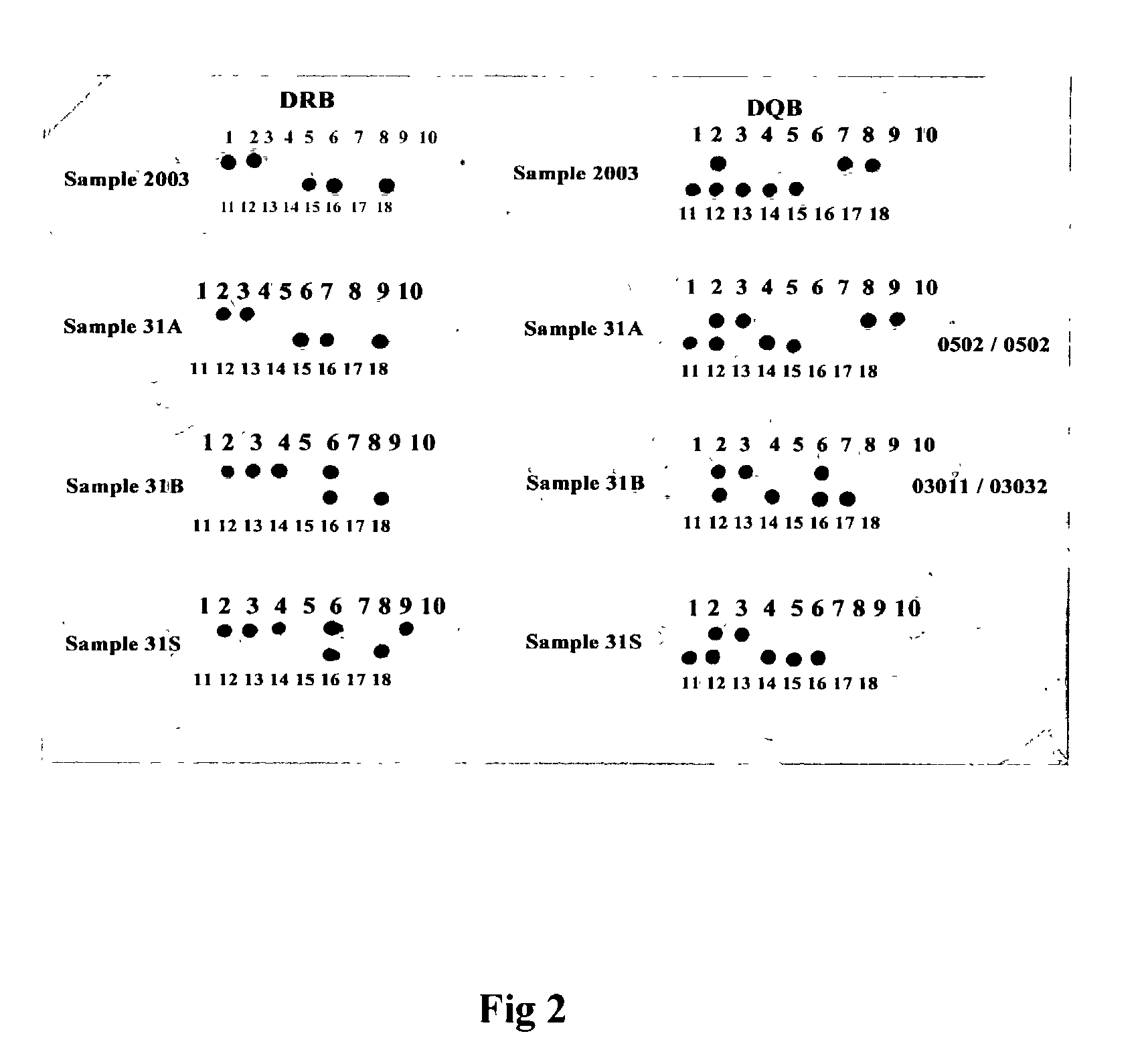SNP-based HLA-DP, DR and DQ genotyping analysis by reversed dot blot flow through hybridization
- Summary
- Abstract
- Description
- Claims
- Application Information
AI Technical Summary
Benefits of technology
Problems solved by technology
Method used
Image
Examples
example
[0032] We have designed and evaluated 109 ASO probes for the HLA cluster and four PCR primers for amplification. FIG. 2 showed the typical results of the HLA-DRB and DQB loci and the classification into genotypes. FIG. 3 is the results for the HL.LAMBDA.-DPB1. The ASO_RDB data summary are given in FIG. 4 and 5 and the genotypes and allele frequencies are given in Table 1 and 2. All data were confirm with DNA sequencing determination. In principle, any known ASO or SNPs of any organisms with adequate data to perform genetic analysis can be tested or detected by the Flow-through Hybridization Method. The results of hybridisation is done within minutes.
[0033] Reference
[0034] 1 Bunce M et al. (1995) Tissue Antigens, 46, 355-367 Mach B et al. (1990) in Molecular Biology of HLA Class II Antigens, ed. Silver J (CRC, Boca Raton, Fla.), pp. 201-223
[0035] 2 Mach B et al. (1990) in Molecular Biology of HLA Class II Antigens, ed. Silver J (CRC, Boca Raton, Fla.), pp. 201-223
[0036] 3 Tam Joseph ...
PUM
| Property | Measurement | Unit |
|---|---|---|
| Angle | aaaaa | aaaaa |
| Radioactivity | aaaaa | aaaaa |
Abstract
Description
Claims
Application Information
 Login to View More
Login to View More - R&D
- Intellectual Property
- Life Sciences
- Materials
- Tech Scout
- Unparalleled Data Quality
- Higher Quality Content
- 60% Fewer Hallucinations
Browse by: Latest US Patents, China's latest patents, Technical Efficacy Thesaurus, Application Domain, Technology Topic, Popular Technical Reports.
© 2025 PatSnap. All rights reserved.Legal|Privacy policy|Modern Slavery Act Transparency Statement|Sitemap|About US| Contact US: help@patsnap.com



